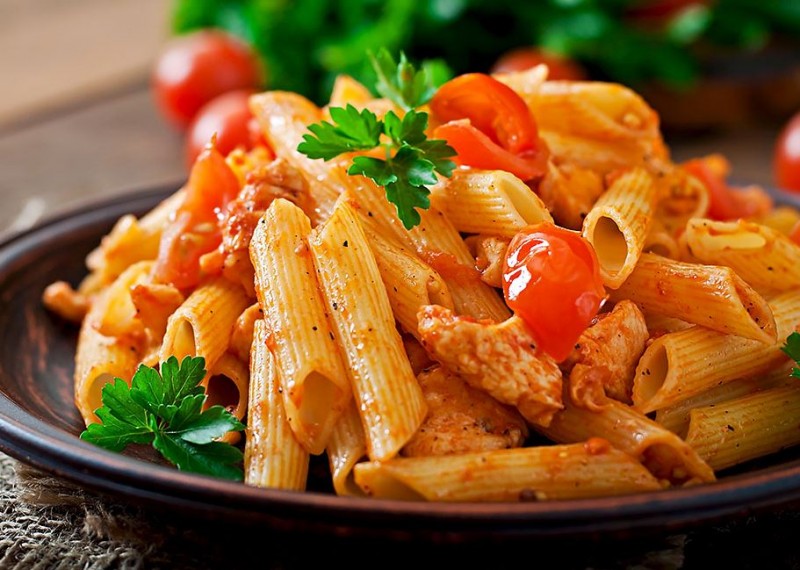
Pasta has become a staple in many households due to its convenience and versatility. However, the choices made during the cooking process can significantly impact the healthiness of this beloved dish. In this detailed guide, we will delve into each point mentioned earlier, offering insights and tips on how to make healthier pasta choices.
Quantity Matters:
When it comes to pasta consumption, understanding the importance of quantity is crucial. Whether opting for whole wheat or durum wheat pasta, both variants contain a similar calorie count, differing mainly in their fiber content. It's essential to pay attention to portion sizes to avoid overconsumption of calories.
Whole wheat pasta, being minimally processed, retains more nutrients and fiber compared to its refined counterpart. This higher fiber content aids in digestion and contributes to a feeling of fullness, potentially preventing overeating.
Additionally, portion control plays a vital role in weight management. Consuming an appropriate amount of pasta, paired with a balanced diet, ensures a healthier overall lifestyle.
Sauce Selection:
The choice of sauce significantly impacts the nutritional profile of your pasta dish. While white sauce pasta is a popular choice for its creamy texture and rich taste, it often contains higher levels of saturated fats from ingredients like cheese and butter.
On the other hand, red sauce pasta, typically made with tomatoes and various herbs, offers a lighter alternative with lower fat content. Tomatoes are rich in antioxidants and vitamins, providing additional health benefits.
For those seeking a compromise, a mixed sauce can be created with a focus on moderation. Choosing high-quality, fresh ingredients and being mindful of portion sizes can help strike a balance between flavor and nutritional value.
Quality of Oil:
The type and amount of oil used in pasta preparation contribute to its overall healthiness. Opting for high-quality oils, such as olive oil or avocado oil, provides healthier fats that are beneficial for heart health.
Using oil sparingly is equally essential. While some fat is necessary for flavor and texture, excessive amounts can contribute to unnecessary calorie intake. Balancing the use of oil with other flavorful ingredients, such as herbs and spices, can enhance the taste without compromising health.
It's important to consider the smoke point of the oil as well. Cooking oils have different smoke points, and exceeding these temperatures can lead to the production of harmful compounds. Choosing oils with higher smoke points for cooking at higher temperatures ensures food safety.
Include Vegetables:
Enhancing the nutritional profile of your pasta dish can be achieved by incorporating a variety of vegetables. Vegetables not only add color and flavor but also contribute essential vitamins, minerals, and antioxidants.
When including vegetables, consider their preparation method. Opt for cutting them into larger pieces or choosing varieties that hold up well during cooking. This ensures that the vegetables retain their nutritional value and provide a satisfying crunch to the dish.
Experimenting with different vegetable combinations can add diversity to your pasta dishes. Broccoli, spinach, bell peppers, and cherry tomatoes are just a few examples of vegetables that complement pasta well while offering numerous health benefits.
Pre-Boiling Technique:
The pre-boiling technique, also known as resistant starch, involves boiling pasta a few hours in advance and allowing it to cool before consumption. This method alters the pasta's structure, turning some of its starch into resistant starch.
Resistant starch behaves similarly to dietary fiber in the digestive system, providing various health benefits. It can improve insulin sensitivity, promote a feeling of fullness, and contribute to gut health by serving as a prebiotic.
Pre-boiling pasta in this manner not only enhances its nutritional content but also positively influences its impact on blood sugar levels. This technique is particularly beneficial for those concerned about the glycemic index of their meals.
Making healthier pasta choices involves a combination of mindful ingredient selection, portion control, and cooking techniques. By understanding the impact of quantity, sauce selection, oil quality, vegetable inclusion, and the pre-boiling technique, individuals can enjoy pasta as a flavorful and nutritious part of their diet. Implementing these tips not only enhances the overall healthiness of pasta dishes but also encourages a balanced and mindful approach to eating.
Which tasks should be done after waking up in the morning and which should not be done?
How to Celebrate Bittersweet Chocolate Day: Bittersweet Symphony, Delicious Recipe